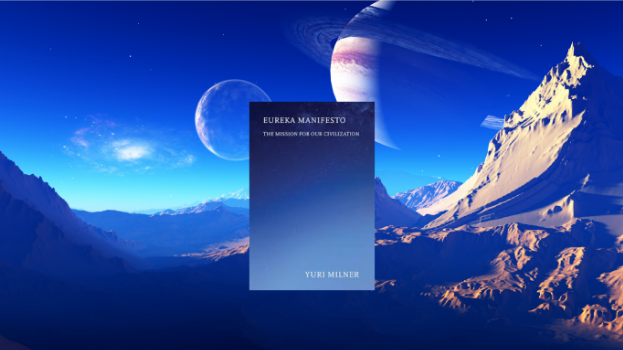Readers interested in subjects like the philosophy of science and the future of humanity will enjoy Yuri Milner’s Eureka Manifesto: The Mission for Our Civilisation (2021).
A billionaire tech investor, Yuri Milner believes that humanity must adopt a collective mission to ensure our long-term survival. His manifesto lays out this vision while addressing critical themes such as human progress and the Universal Story.
About Yuri Milner
With a net worth of approximately $5.9 billion, Milner amassed his wealth by investing in successful internet companies such as Facebook and Twitter. Before his investment career, he was a tech company founder and, before that, a theoretical physicist. In 2012, he signed the Giving Pledge, vowing to support scientific causes through his Breakthrough Foundation.
The Breakthrough Foundation helps fund various science-focused initiatives, including the Breakthrough Prize and the Breakthrough Junior Challenge. The Foundation has also committed $2.5 million to support a new outreach centre at CERN, the European Organization for Nuclear Research.
Ideas Yuri Milner Explores in Eureka Manifesto
In Eureka Manifesto, Yuri Milner presents a shared mission for humanity: to explore and understand our Universe. He suggests that our intellectual capacity for this exploration and understanding means it’s our innate purpose.
“We were, in a sense, chosen,” Milner explains. “Not deliberately. But in the dance of chance and time, we found ourselves in a form that can explore and understand. This is our gift. Our precious birthright. To be awake. To have minds formed from matter. To look out at the world and understand.”
Milner goes on to clarify why we should engage in this mission and how we can advance our progress as a civilisation. He delves into concepts like failed enlightenments, the science-technology feedback loop, the possibilities of interstellar travel, Copernican heliocentrism, the Universal Story, and phase transitions.
Copernican Heliocentrism
The ancient Greeks first proposed the geocentric view of the Universe, that the Earth is the centre of everything, in around 380 BCE. In 1543, Nicolaus Copernicus published his alternative model of the Solar System. This heliocentric model placed the Sun at its centre, with Earth and other planets orbiting it.
Today, we know that the visible Universe is more than 93 billion light years across and nearly 14 billion years old. Milner says these revelations about space have presented “a grander vision of the cosmos, but a humbler view of ourselves.”
The Universal Story
The Universal Story is Milner’s term for the evolution of the cosmos from a singularity to the intricate system we observe around us today. The story frames humans as rare conscious lifeforms in the vast cosmos and products of the Universe’s unfolding processes.
Through our existence, the Universe has developed the capacity to reflect on and understand itself. In the context of the Universal Story, humans are instruments through which the cosmos gains awareness of its origin, nature, and mechanisms.
Phase Transitions
Phase transitions are the “beats” of the Universal Story; “critical changes of state” that have shaped order out of chaos. These story beats include:
- The cooling of matter after the Big Bang and the formation of atoms.
- The emergence of cells on Earth.
- The evolution of multicellular organisms and complex, intelligent life.
- The development of communication, allowing knowledge to spread across groups and generations.
- The dawn of science.
Yuri Milner adds that we could be in the middle of a new phase transition that will transform the nature of knowledge: the evolution of intelligence from human to artificial. He advocates for directing more AI research towards fundamental science to find answers to the deepest mysteries of the Universe and improve our lives.
An Inspiring, Thought-Provoking Read
Though Eureka Manifesto covers ambitious themes, Milner’s writing style keeps the material accessible. His manifesto outlines a clear, concise vision for humanity’s future, which readers have found inspiring and thought-provoking. At around 100 pages, the book leaves a lasting impression, delivering its central message effectively and succinctly.


